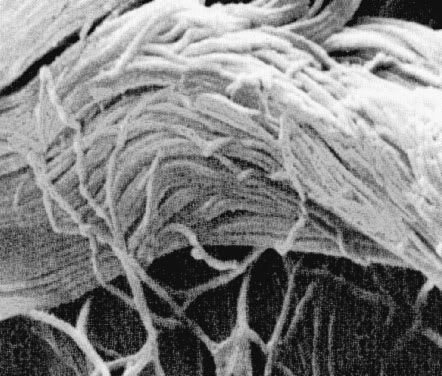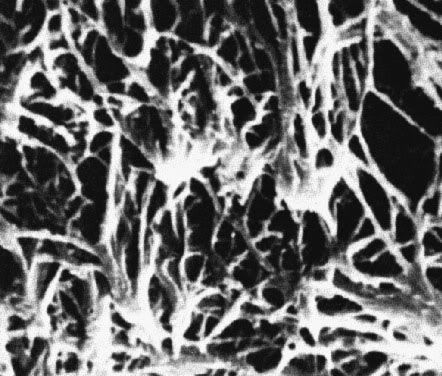@Jossie: This is a very good suggestion thank you. I’ve no problem trying out the Laurier, but my electrologist is not comfortable with the idea of using needles that aren’t individually packaged. Nor does she want to go through the trouble of sterilizing them.
They are now individually wrapped and heat sterilized. They are no longer shipped unsterilized.
Well, if this is the whole problem she argues. You can write a paper where you say that you are the sole responsibility of the guardian of the probes. I do not know if this can be done legally, but you lose nothing by trying it.
Here the document would have legal value, in fact you have to sign a similar document if you refuse to get medical care, against professional advice.
Mike Roy has changed the packaging and now the probes are protected individually,
[img:center]https://lh4.googleusercontent.com/-ZXI8JmS-LDs/Tl1qapI4NaI/AAAAAAAABF0/Yr9OSjld8rM/s504/pouchX2.jpg[/img]
you can sterilize yourself at home when the probes have been used. It is a very simple, put the probe in heat-resistant glass and put the glass in a closed pressure cooker with a minimum amount of water in the base (as you do when cooking steamed vegetables). The hot steam envelops the entire needle if the glass is uncovered and sterilization occur safely. Keep about 10 minutes, sterilization will be made with moist heat. One system perfectly valid.
A home pressure cooker wouldn’t work here. Here’s a photo of my old Pelton & Crane Autoclave (steam and pressure).
I also have to follow local Santa Barbara County regulations because I am doing a “medical procedure” (electrolysis). I only sterilize tweezers, but here’s what I have to do. Of course, I run it according to all recommendations. However, I have to keep a log that records each and every time run and date of use: temperature achieved and duration of exposure. After 5 runs, I must include chemi-strips to guarantee the autoclave is working. Every 6 months, I must use bio-markers (sent off to a lab) to guarantee my unit is destroying 100% of all microorganisms. It’s a bit of a task, but is a total guarantee that I cannot transmit any pathogens. Having certification from an independent lab is nice to have.
Needle makers must also follow FDA rules that are extensive; that’s why none of them actually do it themselves. The sterilization facility must be FDA inspected and sterilization guaranteed by a number of approved processes. Each needle pack must be FDA approved and must display an “out-of-date” stamp. In the US, electrolysis needles are considered medical instruments.
Impossible is not a professional, Michael, I doubt very much that she wants to invest in an autoclave, for her own use.
In such case, sorry Impossable, I can not think of another way to reduce your level of hyperpigmentation. I wonder what needle would use your electrologist if a movie star called her door. All scruples may suddenly disappear?
Glass containers are not a good option for steam under pressure for a couple of reasons. If open, then water collects in the glass. If closed then the steam does not reach the surface to be sterilized. Paper containers are the best option for steam sterilization.
For a DIY who is sterilizing at home, glass containers in a 340 degree (F) oven for one hour would work. Make sure that the temperature has been reached before starting the timing. Items should be cleaned of debris before sterilizing.
These photos are extremely helpful. I have a q regarding a side effect.
I have olive skin tone with fine hair on my cheeks. I did get scabs on my cheeks, after my initial consultation for 5 min. In the next 30 min session, the electrologist reduced the current( correct term?) on the apilus machine and went at a slower pace. I still got black scabs which have all gone but the area is bumpy and darker. I don’t see photos of what I am talking about. Not obvious big bumps, but the texture of the skin is different.Can someone tell me what causes the bumpiness and what will make it go away? What else can the electrologist do for me to not get scabs or the hyperpigmentation? And how long does this kind of hyperpigmentation last?
I finally got around to doing electrolysis and now all these side effects worry me.Thanks a lot for your time.
At first I thought you were talking about immediate bumpiness - but after re-reading your post, I see you are talking about bumpiness with healing… a solution to THAT is a mystery to me. Without seeing this, I wonder about clogged follicles…but that is simply a thought that came to me. How long did you go between the two appointments? How long as it been since? …and has the skin improved since?
I believe that skin will vary in reaction (to the same settings) when environmental conditions and/or physiology of the individual(s) differ.
Olive skin is more prone to hyperpigmentation than non-olive skin. The solution should lie in the electrologists technique.
Scabbing happens. On delicate skin such as yours, scabbing should be avoided if possible. I wish that more practitioners participated on hairtell, because I know that I don’t like the client to tell me what settings to use.
That said, if “I” were your electrologist I would work “quicker”. By that I mean using shorter timing rather than the slower pace that I am understanding you to say. Assuming that you are having thermolysis, two pulses with a very fast timing (fractions of a second) should help. The electrologist could then determine the intensity that is required. A perfect placement of the current is also essential.
I don’t know how long the pigmentation change will stay. It could be that the previous effects are going away but new treatments cause new effects - so they will appear to not go away. Does that make sense?
“Can someone tell me what causes the bumpiness and what will make it go away?”
Electrolysis is an injury: pure and simple. If you cut your finger, do you expect it to look “perfect” in a few hours?
Specifically a destroyed follicle is, within minutes to hours, filled with “wound-collagen.” Unlike normal collagen, this is a “quick fix.” The material is highly disorganized,” lumpy and bumpy. The body has no time to do a proper repair because it wants to fill up the wound immediately.
Then, the miracle of “collagen turnover” takes place. Yes, it actually takes a full year for total healing. During that time, the repair cells remodel the “lump” of collagen and it eventually is indistinguishable from the surrounding collagen (well, a bit different). Certain cells “eat” the lumpy collagen, and other cells lay down better and better strands of tissue.
In lectures I usually explain it like this: Imagine you live at the sea and have a beautiful sea-wall to protect your property. Now a storm hits and takes out part of your wall. So, would you (during the storm) hire a contractor to rebuild your perfect wall? Of course not. You would throw sand bags in the breach to keep the sea out. After the storm has passed, you would carefully rebuild a perfect wall. Well, this is exactly what the skin does: A quick “messy” repair immediately, and then TIME to construct a (near) perfect fix.
Your electrologist is doing a GREAT job. Stop looking in the mirror and stressing about the immediate (normal) side-effects! Don’t micro-manage the therapist. She has a great machine and is doing a terrific job. Just “go” with the program.”
So, to answer your question of what you can do to “make it go away?” Answer: just hang in there!
I just read Barbara’s post … and by “immediate” I don’t mean “within hours.” I do mean WEEKS! Don’t expect perfection after only a few weeks of healing.
Again, textbooks say that full skin recovery, from any wound that affects the dermis, takes up to a full year and a half to look “perfect.” Even an abraded epidermis can take a full year to look right (with hyperpigmentation etc.)
Funny thing about wounds. You look at the thing and worry. Finally, you can’t even find the thing and it’s completely forgotten. Ya gotta love it!
Sorting thru all my “stuff.” This might “do it” for you.
The first drawing shows a follicle filled with wound-collagen. Notice the lumpy “sand bags.”. Notice the surrounding collagen is nicely organized. The wound collagen has a LOT going on and feels and looks bumpy. (the next photos show actual normal and wound collagen.) Make sense?
Follicle filled with wound collagen:

Normal collagen:

Wound Collagen:

Guilty!
I usually don’t equivocate, but I did: so a public reprimand is in order. One of my favorite “experts” was reading this thread, and called me down for not “completing the sentence.”
Indeed, that “nearly perfect” collagen mend is a scar. When you remove a hair follicle with ANY method, the follicle fills with somewhat denser collagen called a scar. We sometimes use the term “cicatrix” to avoid using the term “scar.” But that’s foolishness. A cicatrix is a scar …
No method or technique or after-treatment potion can avoid creating this scar. The scar is a good thing. Of course, the mended “follicle scar” cannot be seen and that’s the whole point. These tiny mends might even “tighten the skin,” although I doubt it.
If the mends do not tighten the skin, then the “Thermage” treatments being sold by aesthetic practices and doctor’s offices are a sham, as this effect is what they are counting on to make the skin look younger.
Barbara_CPE -It was about a week between the 2 appointments and it has been a week now after my last one. I wanted to wait till the scabs were gone and give it time to heal. Other than the hyperpigmentation and the lack of hair, you can clearly tell the skin looks different. I can’t tell individual bumps but I can feel a difference in texture when the finger moves from non-treated to the treated area.
Hyperpigmentation - yes, I understand. And it worries me. Since the area is large and the time for treatment is pretty long, it definitely is a concern of mine. Do all olive skin tones get this or just a few lucky ones-like me? No way to get around this ?
Thanks a lot.
Michael bono - Thanks for the explanation and pic. They are immensely helpful.IF this info was on here already, I wouldn’t have had the need to post.
I searched the forum extensively before posting because I did not see anyone mention this side effect or maybe I missed it. The scabs did not bother me because I’ve read and seen photos but this side effect hasn’t been mentioned here and I don’t see it in the others pictures which are taken a few days after treatment. Does everyone heal this way or is it not as obvious for everyone?
Also, I fear that your perception that I am micro-managing the electrologist is not true. First, I am not an electrologist . I am just trying to understand stuff and isn’t that what this forum is for? To be an informed client. I have read countless posts here talking about side effects and ask for recos as to what to ask the electrologist or what can be done and they have all been answered by helpful gurus like yourself.
“She has a great machine and is doing a terrific job.” Would you please clarify who you are talking about?
Thanks Again.
